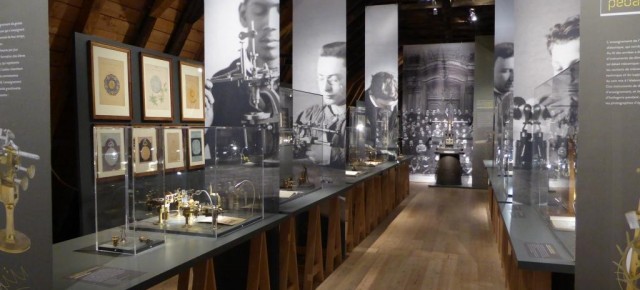The Horlo , the Horlo school, the Lycée Jules Haag, all these names refer to the same institution , an educational institution that has deeply marked the history of Besançon: the watchmaking school . Created in the 1860s for the purpose of the watch industry booming, it was first located all up Plowed (now Revolution Square ) in the building of the former Attic abundance (ex- Conservatory of Music ) . It was not until 1933 that opens the watchmaking school we know , a symbol of the relationship between Besançon in the watchmaking world .
To celebrate 150 years of the School and the 80 years of the current building, now Lycée Jules Haag, the Museum of Time reveals the past of the school, through a collection of » souvenirs » objects and documents , which have been collected and preserved over the years . More than a history of the institution , it is a journey in time is proposed, guided by the traces left by generations of students who gave the Horlo such a prominent place in the collective imagination of Besançon .
Exercise books , student work , personal equipment , teaching materials, with large demonstration models , photographic documentation – class photos and views of workshops – the late nineteenth century until the 1980s reveal the image a School alive in our memories and hearts .
Also discover the archives of the construction of the current building, opened in 1933 and designed by architect Paul Gaudet . Very innovative for its time , the building is marked by the Art Deco aesthetic with its bas-reliefs, mosaics and remarkable staircase .
Structured chronologically , the course of the exhibition traces the history of the school.
The first part of 1862 to 1921 , recounts the genesis of the school, it shows how to structure a watchmaker education in a constant tension between theory and practice, need for achievement training and immediate needs manpower the world of industry.
This section also explores a lesser known side of teaching at the School of Watchmaking , the decoration of watch and jewelery .
The second part, between 1921 and 1945 corresponds to a golden age of the school, under the guidance of its iconic director Louis Trincano . This is the time where built and inaugurated the new building in 1933. Designed by architect Paul Gaudet , it is specially designed for technical education and became the brand of the school, overlooking the City of its imposing silhouette.
Finally the third part , which extends from the post-war until the end of the watchmaking education in 1985, is the closest in the memory of today Bisontins . It is dedicated to more personal aspects, memories related to culture Horlo on the frame of the gradual decline of the watch and the rise of other sectors.
To better discuss the role played by the Horlo in the collective imagination , this part is accompanied by the screening of a documentary film made especially for the exhibition. Based on the testimony of former students, teachers and staff , it immerses visitors in the atmosphere of this iconic school.



